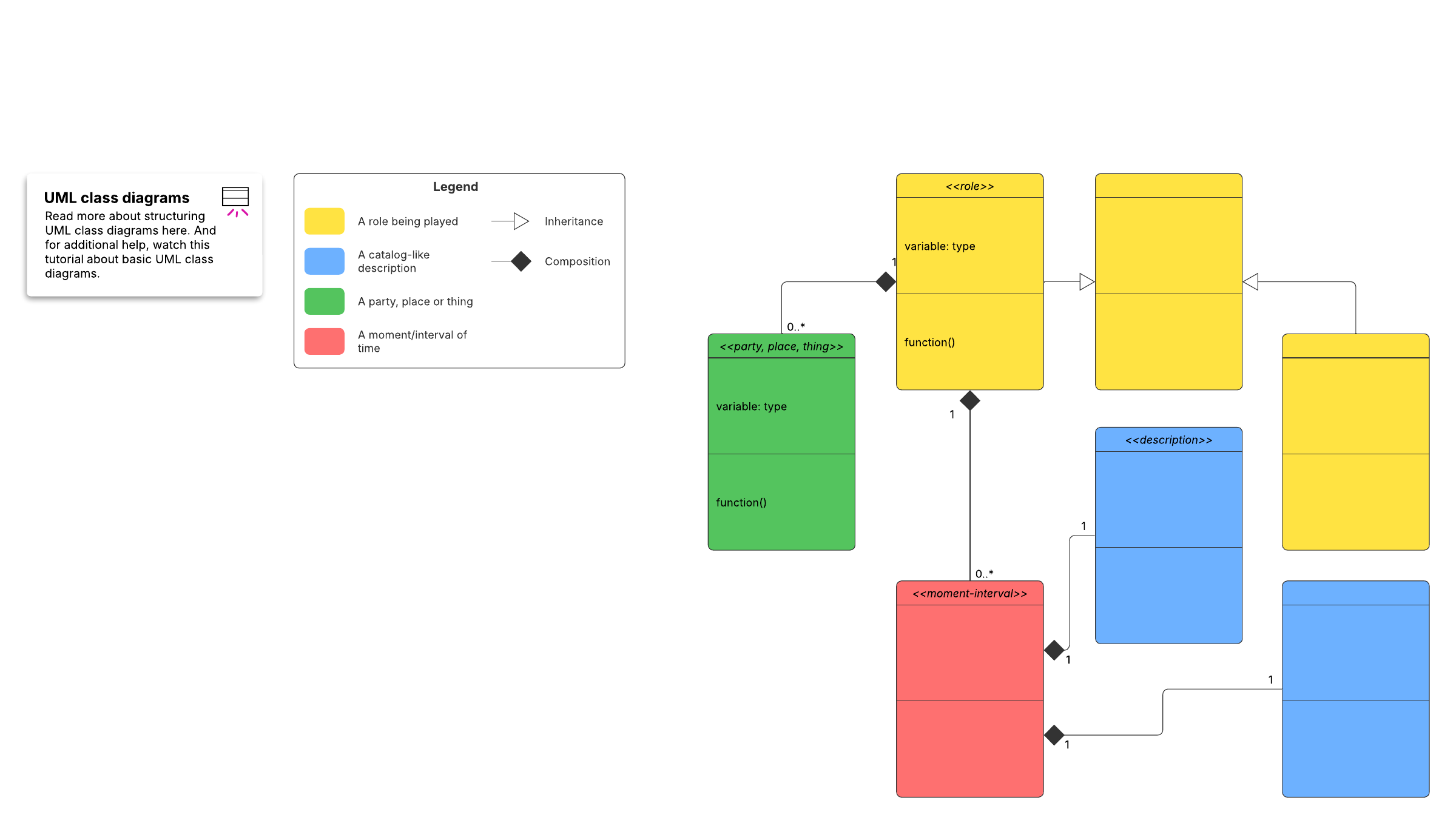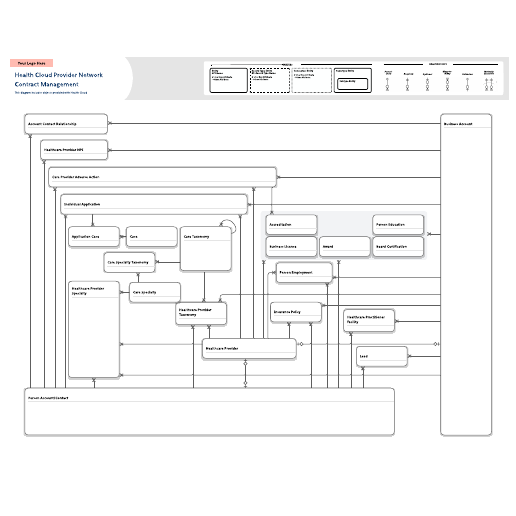Domain object modeling
This template works on the following products:
*For Team and Enterprise plans

This domain object modeling example template can help you:
- Use class diagrams to describe objects in a domain and the relationships between them.
- Save time by letting you know what function to add for each feature and keeping you on track.
- Quickly discover a problem domain's dynamics using colored classes.
Open this template and add content to customize this domain object model to your use case.
What is the domain object modeling template?
The domain object modeling template helps you visualize relationships between objects in a domain and identify a problem domain’s dynamics. This helps you plan and troubleshoot.
You probably need domain object modeling if you’re an analyst, UX/UI designer, QA professional, or software developer.
Benefits of using the domain object modeling template
When you use this template for domain object modeling, you save time. Lucidchart gives you a leg up with the UML shape library, so you don’t have to start from the beginning. You can also customize the template easily by just dragging and dropping shapes.
When you use the template for domain object modeling, the colored classes give you information at a glance. You’ll be able to discover issues so you can act on them quickly.
The template is easy to share and collaborate on. Work on it with your team to align everyone on complex information, whether your team is remote, in-person, or a mix of both.
How to use the domain object modeling template in Lucidchart
Add shapes and move them around within the template as needed. You can add text to shapes by double-clicking them, adding additional lines or updating a line’s cardinality.
This template uses "Modeling in Color," which gives each color a specific meaning. This helps you quickly understand a problem domain’s dynamics. For more information, see the guide on the right side of the template, including tutorials specific to UML class diagrams.
To collaborate on and share this template, use Lucidchart’s integrations, such as Zoom, Slack, and Microsoft Teams (including document linking in a Team Space). You can also collaborate within Lucidchart with the comment feature—you can give feedback and add to each other’s work in interactive sessions.
Related templates

Health Cloud Provider Network Contract Management Data Model
Used with:

Go to Health Cloud Provider Network Contract Management Data Model template

Salesforce Admin Configuration Kit: Security & Visibility
Used with:

Go to Salesforce Admin Configuration Kit: Security & Visibility template
